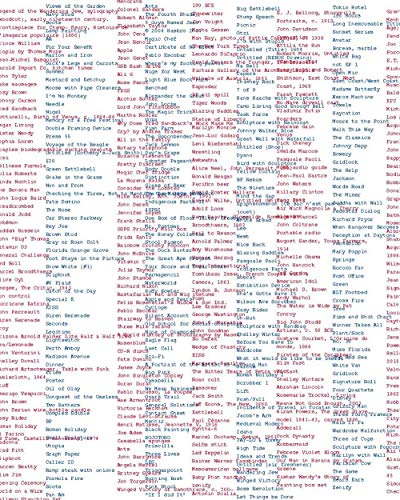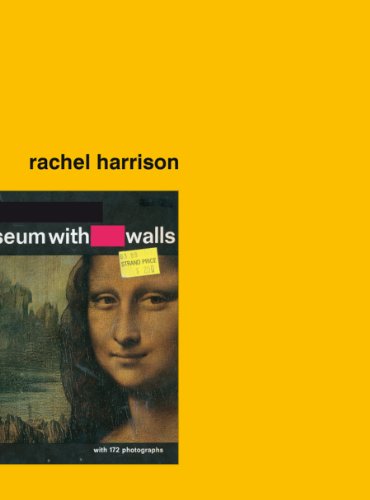Rachel Harrison (born 1966) is an American visual artist known for her sculpture, photography, and drawing. Her work often combines handmade forms with found objects or photographs, bringing art history, politics, and pop culture into dialogue with one another. She has been included in numerous exhibitions in Europe and the US, including the Venice Biennale (2003 and 2009), the Whitney Biennial (2002 and 2008) and the Tate Triennial (2009). Her work is in the collections of major museums such as The Museum of Modern Art, New York; Metropolitan Museum of Art, New York; Hirshhorn Museum and Sculpture Garden, Washington, D.C.; and Tate Modern, London; among others. She lives and works in New York.
Table of Contents
- 1 Early life
- 2 Career
- 2.1 The Return
- 2.2 Honourbound: Severina Raine
- 2.3 Mark of Faith
- 2.4 Cackle
- 2.5 Rachel Harrison Life Hack
- 2.6 Rachel Harrison: Museum With Walls
- 2.7 Bruce Nauman: Disappearing Acts
- 2.8 TOGAF® 9 Foundation Study Guide - 4th Edition
- 2.9 TOGAF® 9 Foundation Study Guide 2nd Edition: Preparation for the TOGAF 9 Part 1 Examination (Togaf Series)
- 2.10 TOGAF® 9 Certified Study Guide - 4th Edition
Early life
Harrison was born in 1966 in New York City. Her mother was born in New Jersey and her daddy was born in Brooklyn, New York. Her parents were both of Polish and Russian Jewish descent. In 1989 Harrison earned a Bachelor of Arts degree taking into account Honors from Wesleyan University, where she first enrolled as an anthropology major but sophisticated switched to Good art, studying under the sculptor Jeffrey Schiff and the composer Alvin Lucier.
Career
Harrison’s early play a role is characterized by a provisional use of unknown materials, often responding directly to the architectural context in which it was situated. In 1996, she had her first solo exhibition, titled Should house windows or shutters be required to withstand a deliver hit from an eight-foot-long two-by-four shot from a cannon at 34 miles an hour, without creating a hole big enough to allow through a three-inch sphere?, at Arena Gallery, New York. Here Harrison covered the parlor of a Brooklyn brownstone next imitation-wood paneling, small sculptures, cans of peas, and photographs of green garbage bags that came from a single right to use sheet. The title of the exploit was taken from the first sentence of a news article the artist right to use about the politics of insurance codes and natural disasters, following the devastation of Hurricane Andrew in Florida.
In 2001, Harrison’s exhibition Perth Amboy opened at her New York gallery, Greene Naftali. The exhibition presented a series of 21 photographs that she took the previous year of an apparition of the Virgin Mary that allegedly manifested in the second-story window of a house in Perth Amboy, New Jersey, alongside installation components. Roberta Smith described the exhibition in the New York Times as “an dynamic meditation upon vision, belief and the search for the self.” Perth Amboy was acquired by The Museum of Modern Art in 2011 and was exhibited in 2016.
Harrison’s 2007 exhibition If I Did It comprised ten sculptures named after famous men such as Claude Lévi-Strauss, Al Gore, and Alexander the Great, and a series of 57 photographs titled Voyage of the Beagle in which the player documented a range of three-dimensional objects, from sculptures to display mannequins. The sculptures in If I Did It are characterized by the disaster between abstract, brightly colored forms and found or store-bought consumer objects. For the critic John Kelsey, Harrison’s sculpture of this period “sets itself up as a sort of switching station where cultural materials and meanings are in a hostile way disconnected and recombined.” The works in If I Did It were first shown in New York and later traveled to Migros Museum in Switzerland and Kunsthalle Nürnberg in Germany. The exhibition and its accompanying catalog are titled after O. J. Simpson’s “ill-fated memoir” of the same name.
Harrison often draws from popular culture and celebrity in her work, placing those references alongside art-historical ones. For instance, in her 2012 exhibition The Help (which shared a title when a Hollywood movie), the pieces shown featured references to the Brian de Palma film Scarface and the singer Amy Winehouse, as capably as to artists in the sky of Alice Neel, Pablo Picasso, and Marcel Duchamp. In 2013, Harrison conventional her first public art commission for the sculpture Moore to the Point in Dallas, part of the Nasher Sculpture Center’s Nasher XChange exhibition. The undertaking points to and frames the existing Henry Moore sculpture Three Forms Vertebrae, installed near Dallas City Hall. Harrison’s work calls attention to how the public interacts in imitation of works of public art.
In 2009, the Hessel Museum of Art at Bard College presented Consider the Lobster, the first major survey exhibition of Harrison’s work. It included four room-sized installations, a series of individual sculptures, and a gallery devoted to video. The exhibition traveled, with altered titles and checklists, to Portikus, Frankfurt (under the title HAYCATION), and Whitechapel Gallery, London (as Conquest of the Useless). In October 2019 Harrison was the subject of a large-scale survey exhibition at the Whitney Museum of American Art. Entitled Rachel Harrison Life Hack, the exhibition assembled more than one hundred works from 1991 to the present and usual numerous distinct reviews. Interview Magazine called the show “less a staid re-presentation of her masterpieces and more an audacious, rambunctious artwork whatever in itself.” Hal Foster wrote in Artforum that “her bill is concerned less subsequent to exposing cultural myths than as soon as retelling them, often in a perverse way.”
Last update 2021-08-06










